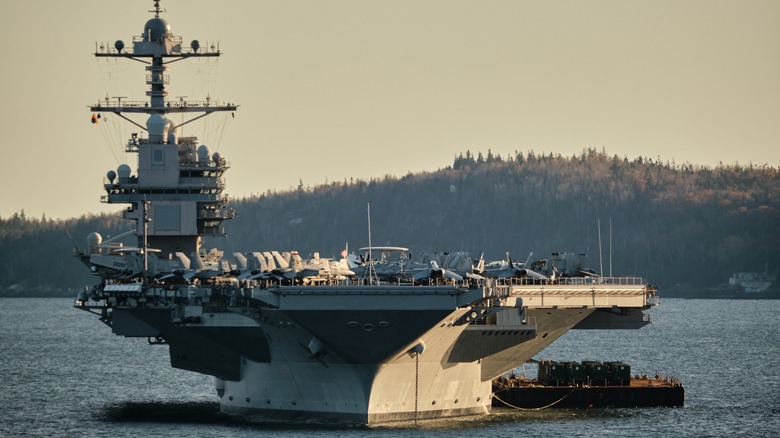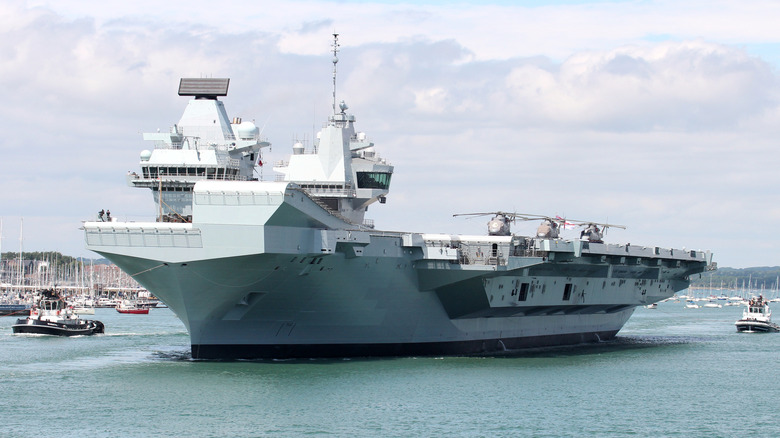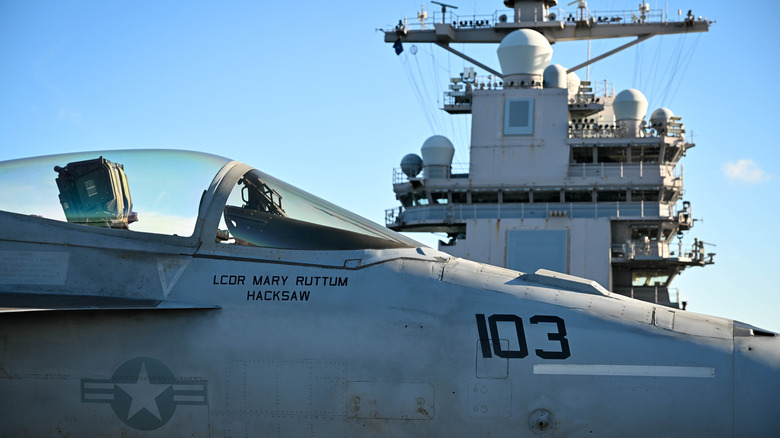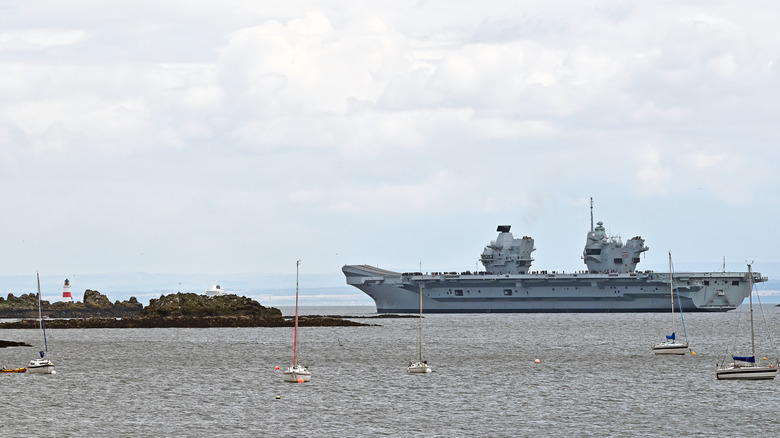Diesel Vs. Nuclear Aircraft Carriers: The Biggest Advantages Of Each
With any vehicle, the type of power it needs is a key concern for a variety of reasons: Is it economically viable? Is it the most efficient choice for a vehicle of its type? In these uncertain times of climate change, the greenest option is important to consider as well. This is the case for everything from the smallest vehicles to the biggest, and they don't come much bigger than aircraft carriers.
In July 2017, the commissioning of USS Gerald R. Ford marked the world's largest ever, a formidable vessel weighing a colossal 110,000 tons. The power source selected for this behemoth was nuclear, supplied by an all-new plant.
Conventionally powered aircraft carriers, meanwhile, often use diesel. Both types of power offer their unique advantages and disadvantages, just as it is with electric vehicles in comparison to gas-powered ones. The Royal Navy's HMS Queen Elizabeth, another supercarrier (with those intriguing two islands), is a powerhouse itself. At 65,000 tonnes (71,650 tons) and capable of more than 25 knots of speed, it's an intimidating flagship in the Royal Navy's arsenal.
It's also, interestingly, diesel powered. There are numerous reasons why this route was taken. Here's a look at each type of aircraft carrier and why one may be chosen over the other.
The advantages of diesel aircraft carriers
HMS Queen Elizabeth is equipped with four diesel engines and two gas turbines, all adding up to around 112 megawatts of power production. This tends to be more familiar territory for shipbuilders, with facilities for the creation of more specialized nuclear-powered components being more limited. In the case of the United Kingdom, construction experience is limited to nuclear submarines, rather than vessels of this scale.
Running costs are also a vital consideration, and in terms of fuel, diesel engines are, essentially, a cheaper source of power. Efficiency is key: A diesel engine, as with that of a car, can be casually started at the beginning of a journey and shut off at its end. By contrast, doing the same with a nuclear-powered engine is a long and time-consuming process, and such devices must be treated with the greatest care. In April 2020, Bloomberg reported, via the Financial Post, that the replenishment of a nuclear reactor "can involve more than 1,000 people converging on a power plant for a month or more of maintenance and testing."
Ships powered in this way are not standard nuclear reactors, but the fact remains: USS Gerald R. Ford has a total crew of around 4,660 people, and at least some of those people must dedicate themselves to regularly babysitting the nuclear component, which would not be necessary with a diesel vessel.
The advantages of nuclear aircraft carriers
One of the major advantages of nuclear power over diesel, as is often touted, is the reduced impact on the environment. This is a particularly important consideration for the United States military. As the Union of Concerned Scientists noted in June 2014, "uses more oil than any other institution in the world." As a counterpoint, though, it is also well placed, in terms of the sheer size and numbers of its vehicles and the cutting-edge technology it has access to, to innovate with respect to making the decisions necessary to significantly reduce emissions.
Deciding that USS Gerald R. Ford would be nuclear powered was one such decision, and one that didn't involve sacrificing performance: In fact, its engines are capable of propelling it faster than the U.K.'s diesel behemoth. They do not produce the pollution and harmful gases that diesel vessels do, either.
Because nuclear aircraft carriers have more sensitive components, they require diligent care. What they will not need, however, is frequent refueling. Of course, they'll usually be accompanied by a fleet of aircraft that will need servicing in this way, but such operations will be a little less time-consuming as a result.
Aircraft carriers are built for protracted operations and long periods of service, and the strengths of nuclear-powered ones fit into this very well.
Is there a better type of aircraft carrier?
Ultimately, both nuclear and diesel aircraft carriers serve their purpose. The preferences of individual nations, military organizations, and designers come down to which of them seem more fitting, and the picture is rather more complex than it may seem.
For instance, it's not as simple as saying that nuclear is the greener path to take. Theoretically, of course, this is the case, as oil is not being expended, but what of the resultant nuclear waste? The United States boasts only one facility for the dedicated treating and decommissioning of nuclear components and waste: Pugent Sound Naval Shipyard, which has primarily treated submarines.
Submarines, of course, benefit greatly from nuclear power, which enables them to stay submerged for longer without having to refuel. For aircraft carriers, though, their specialized components can make them rather more expensive to run (and build in the first place).
The choice can also come down to future-proofing. Will diesel components be as readily available in the future? Will other aircraft carriers be sold as scrap for a single cent? Will nuclear technology become more widespread and less costly? Though it's not uncommon for military vessels to be revamped and recommissioned as new technology allows, all of these factors may be taken into consideration as well. And there isn't a right answer, necessarily, but it's certain that naval and military technology in a wider sense will have a key role in our future.



